#dogon mythology
Explore tagged Tumblr posts
Photo
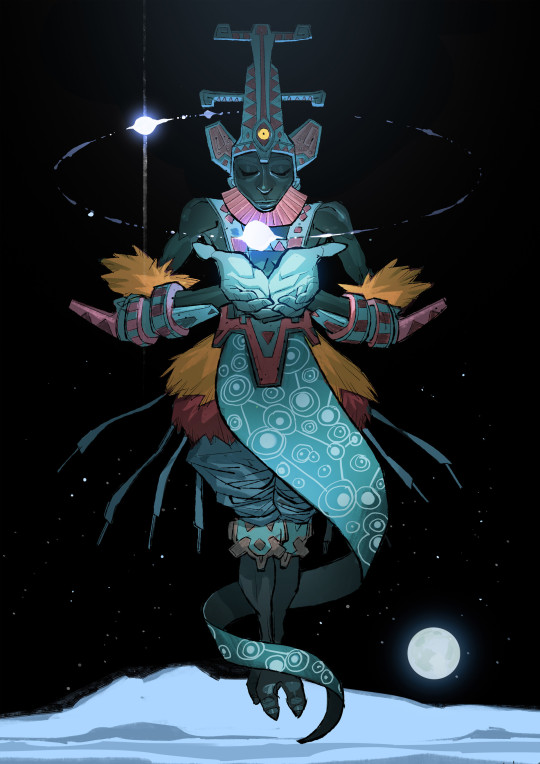
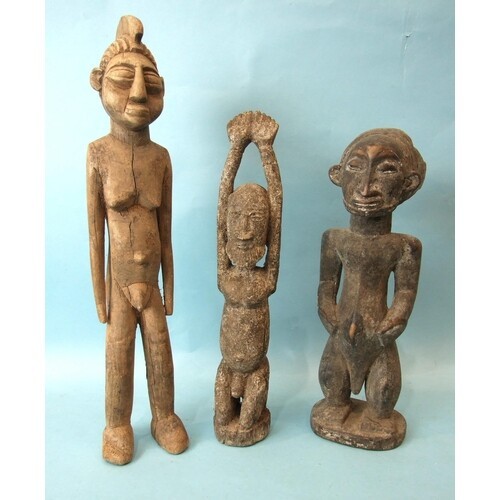
The Nommo [Dogon mythology; African/Malian mythology]
In 1948, French anthropologist Marcel Griaule published his book Dieu D’eau: Entretiens avec Ogotemmêli (‘god of water: conversations with Ogotemmêli’) on the culture and mythology of the Dogon people in Mali. This book detailed the Dogon creation myth in which Amma, the creator god, built the Earth out of clay. He then had sex with the Earth (the sexual organ of the Earth was an ants’ nest), which bore his offspring: the two Nommo twins. The Nommo helped their father to create humanity. It was also said that the Nommo built an elaborate stairway to descend to Earth from the heavens.
In 1965, Griaule published another work on the matter: Le Renard Pâle (‘the pale fox’). This book presented a completely different Dogon creation myth, in which the creator god Amma hatched the world from a primordial egg. The Nommo feature in this version as well, being ancient water spirits created in heaven. One of the Nommos, Ogo, rebelled against the others and managed to escape from heaven, starting the universe in the process. This was the beginning of space and time, and his placenta became the Earth. As punishment, Amma transformed Ogo into a pale fox. The fox then attempted to have sex with the Earth, spawning strange bush spirits.
Though the Earth was created, it was tainted and corrupted by Ogo’s acts. And so another Nommo, Ogo’s twin, sacrificed themselves to purify the planet. In the process, he created the stars Sirius A and Sirius B. This detail spawned a lot of discourse throughout the years, since Sirius B is not visible with the naked eye, so how could the Dogon have known about it?
But it gets weirder: the Nommo, the primordial beings associated with the Sirius system, built an ark on which they sent the first 8 humans to Earth, where they would populate the world and became the ancestors of humanity. Many ‘ancient alien’ theorists (such as Erich von Däniken) viewed this as proof that Africa was visited by beings from the Sirius star system in the distant past. This also renewed public interest in the Dogon people and kickstarted local tourism.
But there were problems. For one thing, why are there two different sets of Dogon mythology and creation myths? According to anthropologist Germaine Dieterlen, this is because there are several differing levels of initiation into Dogon religion. A bigger discrepancy is presented by the Dogon themselves: when questioned by later anthropologists, the two creation myths mentioned earlier were unknown to most Dogon people. In addition, the Dogon claimed that it was Griaule who told them about Sirius B and that they had no knowledge about that star before the arrival of the French anthropologist. Therefore, it seems likely that the story about ancient creatures who came from the heavens in an arc were at least partly made up by Griaule or originated from a misinterpretation. The Nommo, however, do feature in Dogon mythology as water spirits. Though they are not as central to the native Dogon religion as was previously believed, the Nommo are widely feared: in traditional Dogon beliefs, each river, lake or other significant body of water is home to either one Nommo spirit or a pair (one male and one female Nommo). They reside in the depths and occasionally grab people who venture too close to the water, pulling them under and drowning them. People also make offerings to the Nommo to placate them, so that they stop taking people.
Sources: Van Beek, W. E. A., 1991, Dogon Restudied: A Field Evaluation of the Work of Marcel Griaule, Current Anthropology, 32(2), pp. 139-167. Bouju, J., and Leonardo, J. R., 2003, Nommo – the Spirit of Water – in the Dogon World, MIT Press, 36(4), pp. 279-280. (image source 1: Miki Montlló on Artstation) (image 2: three Nommo statuettes. Image source: lot-art)
75 notes
·
View notes
Text

Nommo, the first Dogon ancestor. After the creation of the cosmos, the supreme god Amma created the first earthly being, that being was Nommo. Nommo was the culmination of Amma’s creation, holding both sexes, they were the purist form of life. Nommo held complete dominion over water, being intrinsically tied to the life bringing substance. After his creation, Nommo multiplied into four pairs of twins, all also named Nommo. One of each pair of the twins was male, while the other was female, continuing Amma’s divine order of dual sex. However, another child of Amma, the jackal god Ogo, sewed chaos across the world, even turning some of the Nommo to his side, his power threatened to destroy the world. One of the Nommo stepped forward, offering themselves as sacrifice to correct the world’s balance. Amma used this Nommo’s body, flinging their parts across the earth, purifying it from Ogo’s darkness. Where each part landed a shrine was built. However, These events caused the Nommo’s descendants, humanity, to now be imperfect, resulting in less twin births to uphold the dual sex order. The Nommo were described by their descendants, the Dogon, to be amphibious spirits. They were depicted with a human body and legs with a fish tail, other descriptions said they had a human upper body and a snake lower body.
The word Nommo is believed to be derived from a Dogon word that means “to make one drink”, some Dogon have posited that it actually means “master of water” instead, they have also been called “the teachers” and “the monitors” instead. As a term Nommo is used to refer to both the first ancestor deity and their progeny, both groups are referred under androgynous and genderfluid pronouns. In the 1940s a pair of German anthropologists, Germaine Dieterlen and Marcel Griaule, claimed that they had received secret teachings from their Dogon informants. Allegedly they transcribed a myth which stated that the Nommo were originally from a planet in the Sirius star system, also known by the Dogon as Sigui Tolo, who then came to earth on a ship of fire and lightning, in this myth it’s alleged that it held information about Sirius that would’ve been impossible to ascertain by the naked eye, such as it having a companion star and that it had a 50 year orbital cycle. This has been used by conspiracy theorists to appropriate the Dogon religion, saying that the Nommo were aliens who came to earth. However this has been refuted in modern scholarship as not only did the Dogon have the capability to gain that knowledge through outside forces, but the actual information itself is very dubious. The “knowledge” that was allegedly shared to the anthropologists has never been fully repeated by other Dogon elders, and actually has been rebuked by them on a number of occasions. According to other researchers Sigui Tolo doesn’t refer to Sirius at all, but to the morning star, other traditions state that Sigui Tolo was actually an invisible star that only appeared during festivals. The word Nommo is also used by some African-American philosophers, like Molefi Asante, to connote the power words have to shape our reality.
#art#character design#creature design#mythology#deity#culture hero#race#dogon#dogon mythology#african mythology#mali#burkina faso#water god#nommo#nummo
6 notes
·
View notes
Note
https://youtu.be/U8NNHmV3QPw?si=6aInyR5QVTAT3z0R Watch if you're bored but you might be surprised 🤷🏻♀️.
It's about spirit science
GHJKSD when you said this video was about Spirit Science, I thought you were gonna like, link to a video talking about how the Spirit Science guy Jordan Duchnycz is a rapist or his weird obsession with Emma Watson or his antisemitic claim that Jews come from another planet. I didn't expect you were going to link to like, an actual Spirit Science video.
In brief, what Jordan's putting out here is straight-up baloney. A lot of it's pretty bog-standard New Age pseudohistory based on unsubstantiated conjecture, misinterpretation of various mythological traditions, and shit somebody just pulled straight from their ass. Not only is there no actual evidence to support any of the stuff he's putting out there, the actual evidence we do have inevitably precludes it.
Here are some links that explain why and how we know that people like Jordan are just wrong:
The Sirius Mystery: did the Dogon know about Sirius B?
The Truth About Atlantis
Atlantis @ Bad Archaeology
The Weird Case of Atlantis-Mu in the Madrid Codex
Lemuria, the weirdest continent that never existed
Naacal @ Wikipedia
Close encounters of the racist kind
The Ancient Astronaut Hypothesis Is Racist And Harmful
Zechariah Sitchin @ Bad Archaeology
"The Emerald Tablets of Thoth": A Lovecraftian Plagiarism
Left- vs. Right-Brained: Why the Brain Laterality Myth Persists
Are the Egyptian pyramids aligned with the stars?
Criticisms of Drunvalo Melchizedek @ Wikipedia
Detailed deconstruction of the "face" and pyramids on Mars claims
"Christ" @ Wiktionary
"Allah" @ Wiktionary
Charles Hapgood @ Wikipedia
It’s better light, not worse behaviour, that explains crimes on a full Moon
Sphinx water erosion hypothesis @ Wikipedia
Egyptian Hieroglyphs @ World History Encyclopedia
Predynastic Period in Egypt @ World History Encyclopedia
Sumer @ World History Encyclopedia
Debunking the Myth: The Council of Nicaea and the Formation of the Biblical Canon
First Council of Nicaea @ Encyclopedia Britannica
Did Jesus Go to India? A Modern Gospel Forgery
Also, the fact that Jordan appeals to channeled information is a massive red flag. Channeling is fun and sometimes produces some interesting things, but a source of reliable information it is not.
He also claims that a pole reversal makes the planet start spinning the other way, which is literally not how pole reversals work at all.
And of course, Jason's claim that thirteen powerful families are controlling the world is that general conspiracy theory shit derived from The Protocols of the Learned Elders of Zion, early modern witch panic, and blood libel. The whole thirteen families thing in particular comes from Fritz Springmeier, a far right conspiracy theorist who proudly cites other hateful kooks like Edith Starr Miller and Alexander Hislop and basically claims anything that isn't good wholesome Christian entertainment is actually Satanic programming.
Basically, Jordan Duchnycz is just another New Age conspiracy theorist pushing the same old garbage as loads of others like him.
#answered#spirit science#jordan duchnycz#jordan spiritpatch#conspiracy theories#conspiracy theory#conspiracism#conspirituality#ancient aliens#ancient astronauts#ancient astronaut hypothesis#aliens#extraterrestrials#pseudohistory#history#pseudoscience#science#pseudoarchaeology#archaeology#new age#new agers#atlantis#lemuria#resources
38 notes
·
View notes
Text

Sirius B In 1976, Robert Temple made news with a Sirius B mystery of another sort. In his book, The Sirius Mystery, he speculated that Earth had been visited a few thousand years ago by amphibious beings from a planet around Sirius. His evidence for this incredible assertion came from a report by French anthropologists Marcel Griaule and Germain Dieterlen, who in the 1930s and 1940s had studied the traditions and mythology of the Dogon, a remote West African tribe located about 300 kilometers south of Timbuktu in Republic of Mali. https://chandra.harvard.edu/chronicle/0400/sirius_part2.html?fbclid=IwAR0yiKi008jrlQwM81yG4kzwOKD7OOQkrbXzHfEjibESg2YSYSNhqSn5_p4
83 notes
·
View notes
Text
Kizazi Moto review
Kizazi Moto: Generation Fire is an anthology of animated shorts from studios all over Africa, with the theme of afrofuturism and science fantasy (mixing frequently indigenous spiritual beliefs with the tech, and many shorts are actually about gods or spiritual beings). It's a shame that the project is attached to Disney, because this is one of the best anthologies I've seen in a long while.
So let's review the individual shorts.
Herderboy
By Uganda's Raymond Malinga, this portrays the story of a boy trying to join a band of herders, which harvest kyber crystals from cyborg cows and are under constant attack by spirits (read dark side hyenas). It's a good start to the anthology; the CGI is bright and makes good use of color, and it has a nice twist at the end.
7/10
Mkhuzi the Spirit Racer
By South Africa's Simangaliso Sibaya and Malcolm Wopé, this one bears a bright and joyous 2D animation. It features a half-human half-something boy who struggles with his Zulu identity, and that all comes crashing down in a race against gentrification. It's a delightful short with beautiful visuals and actual incorporation of cultural themes into the narrative.
9/10
Moremi
By Nigeria’s Shofela Coker, this is a pretty bleak looking CGI short not out of place in Love, Death & Robots. Long ago, soul stealing giants forced a woman to construct magical machines by giving her son's heart to the gods; this is about the summary you're gonna get without getting into heavy spoilers. A delight if you're into mythology as there's quite a few allusions to Nigeria's folklore, but I can see people getting a bit confused and the visuals can be grating at times.
6/10
Surf Sagoma
By South Africa’s Nthato Mokgata and Catherine Green, in a future where sea levels rose and mutant octopi lurk in the depths a boy is peer pressured into surfing in dangerous waters. I have to say, while this has a happy ending it is rather bleak and the CGI visuals are not particularly pleasing.
5/10
First Totem Problems
By South Africa’s Tshepo Moche, we're back to 2D, this time more Disney-esque. If I had to describe this, it'd be like a mixture of the first half of Brother Bear and Coco. It's pretty fun, though a bit lacking in substance and the family feuds can get grating.
7/10
Mukudzei
By Zimbabwe’s Pious Nyenyewa and Tafadzwa Hove, an influencer desecrates Great Zimbabwe, only to be taken to a timeline where it never fell to colonialism and became basically Wakanda. The concept alone is amazing, though the story itself is rather generic.
8/10
Hatima
By South Africa’s Terence Maluleke and Isaac Mogajane, this is by far my favourite of the shorts, it features the tragic conflict between merfolk and humans, with a Black Panther 2 reveal at the end. With stellar 2D animation and allusions to Dogon mythology, as well as a good solid plot where the reveal has just the right amount of foreshadowing without becoming obvious.
10/10
Stardust
By Egypt's Ahmed Teilab, I had the highest expectations for this one, being the only Middle Eastern short in the mix. It's an alright story, I really loved the science fantasy twist on astrology by just being handed a "destiny" in a tube with stars inside. The protagonist naturally choses her own fate over the manufactured ones... though getting there is quite spoilerific.
8/10
You Give My Heart
By South Africa’s Lesego Vorster, this is another return to 2D animation and the second one about influencers amusingly enough. The plot kicks off in a competition in which the human contestants can ascend to godhood. Godhood is very much treated like being an influencer, and amusingly one of the previous contestants was demoted by typing in all caps. Overall pretty fun and the animation is gorgeous, though the characters designs can get a bit ugly.
9/10
Enkai
By Kenya’s Ng’endo Mukii, the final short is done in a CGI mimicking stop motion, which combined with the stellar coloration and lighting makes for a stunning visual experience. This too deals with the divine, this time the young Enkai seeking to become a creator deity like her mother. There is a big plot twist that I will not spoil, and recontextualises the whole short.
9/10
Conclusion
I give the overall anthology 9/10; barring a few hiccups, these are wonderful stories from Africa's many creative voices. Again, pity Disney has a grasp on this.
82 notes
·
View notes
Text
Cosmogony

By Michelangelo - Michelangelo. This edit attempts to adjust the perspective caused by the camera lens and the ceiling gradient. Public Domain, https://commons.wikimedia.org/w/index.php?curid=79417962
Cosmogony focuses on the stories of creation of the universe or cosmos. Even the modern Big Bang Theory is a cosmogonic story as it is our best understanding of what happened at the beginning of time with the best theories we have that have been proven within the realms they describe. There are places where the best explanations we have break down because they hit their limits and researchers are looking for science to fill those gaps, such as when a very large mass is compacted into a very small space, to better understand the universe around us.

By NASA, ESA, G. Illingworth, D. Magee, and P. Oesch (University of California, Santa Cruz), R. Bouwens (Leiden University), and the HUDF09 Team - http://www.spacetelescope.org/images/heic1214a/, Public Domain, https://commons.wikimedia.org/w/index.php?curid=21680596
This desire to understand where the world and the universe came from is something that goes back a long way into human history. Many of these stories were lost, but there are motifs that survived into myths that were recorded or survived. Some of these motifs are the world being called into being from nothing, the world being formed by the organization of chaos, a cosmic egg, body parts of a defeated being used to built the world or the copulation of gods who were uncreated but appeared from nothing, and islands being formed from the action of some type of creature.

By Michele Ahin - Joods Historisch Museum - Levensboom glas in lood - Eli Content (Midden), CC BY-SA 2.0, https://commons.wikimedia.org/w/index.php?curid=8292664
Perhaps the best known stories of the world being called into being from nothing are those of the Jewish, Christian, and Islamic faiths, but is also found within the Ancient Egyptian creation story, many animistic cultures from North America, Asia, Oceania, Africa, and in the Rig Veda. This type of story, though, can blur the line between creation from nothing and creation from the organization of chaos. The current, best theory for the beginning of the universe that include the singularity at the beginning of time fall under this type of motif.

By Gustave Doré - w:en:Image:Destruction of Leviathan.png, Public Domain, https://commons.wikimedia.org/w/index.php?curid=283522
In creation from chaos, there is a disordered, formless expanse, sometimes described as a fog or water, or the abyss, being salty or muddy. Creation then becomes the act of ordering the chaos, sometimes with the defeat of an adversary that is causing the chaos. The Biblical Genesis creation story falls in this category more than creation from nothing. This is also the type of creation story in the Enūma Eliš as well as the Greco-Roman and Hawaiian traditions.

By James Basire, 1730–1802 (engraver) - Bryant, Jacob, 1715–1804. A new system, or, An analysis of ancient mythology. vol II plate IV, Public Domain, https://commons.wikimedia.org/w/index.php?curid=12235498
The cosmic egg can emerge from the primordial waters or it can be lain, or rarely, it can be the result of two (or more) primordial beings copulating. Chinese mythology around Pangu is probably the most widely known, but this motif also occurs among the Dogon of West Africa, the Finnish national epic, Zoroastrianism, and a couple of myths of the Greco-Romans and Egyptians. In this motif, often the shell breaks with the upper portion becoming the heavens and the lower the earth. Modern theories that attempt to remove the singularity at the beginning of time from the Big Bang Theory fall under this type of motif.

By Kahuroa - Own work, Public Domain, https://commons.wikimedia.org/w/index.php?curid=796230
The dismemberment of a primordial being to create the universe and the copulation of primordial beings bringing about the universe both fall under the 'world parent' type motif. The first type typically has a sky father and earth mother and give a genealogy of gods and focus on a sexual origin of the universe. One example is that of the Maori creation myth involving Rangi and Papa. The later type focuses on the animistic, even pantheistic, creative force. In this, the body of the dismembered primordial being becomes the universe, becoming the sky, plants, animals, and everything else in the universe. One example is the Norse creation myth in the Poetic Edda.

source: https://www.worldhistory.org/article/2279/lakota-sioux-creation-story/
Islands being created on the primordial ocean by the action of some creature typically falls under the motif of the 'earth-diver'. Typically, a primitive deity tasks an animal, a bird, sea creature, insect, or aquatic mammal, to bring up soil from the bottom of the primordial ocean so that habitable land for other creations can be made. This motif is quite wide spread and is common in a lot of Native American myths, northern Eurasian mythology, eastern European, as well as among the West African Yoruba people.
There is a branch of study that traces human migration through the motifs that are used in their mythology in addition to genetic studies. Creation myths are often seen as the most sacred of these myths and are the most common and reveal a lot of what is important to the teller's culture.
You can learn more with these Crecganford vidoes
The Oldest Creation Myth in the World and its Origins
Genesis (and its Indo European Origins) the Creation myth of the Bible
Proto Indo European Twins of Creation
Reconstructing the Proto Indo-European Myth of Creation
2 notes
·
View notes
Text
The Dogon People who are Naturally Specialize in Astronomy
The Dogon people are a community of people living in present-day Mali. Their original point of migration to their present locale is not known, however, some scholars have traced their ancestry to the ancient Egyptian empire. They are about 300,000 in population occupying about 700 villages with an average of about 500 inhabitants per village.
The Dogon people possess a rich oral history and knowledge of astronomy, which dates as far back as 3200 BC. According to the oral literature of the Dogon tribe, the star named; ‘Sirius A’ (the brightest star in the night sky with a bluish tinge) has an invisible companion star scientists have named ‘Sirius B’. This companion star is not only invisible to the naked eye but also completes a trip around ‘Sirius A’ every 50 years.
The story of the Dogon people of Mali is a remarkable tale of cultural preservation and astronomical knowledge. The Dogon people are an ethnic group that live in the Bandiagara Escarpment in Mali, West Africa. They are known for their unique and complex cosmology, which includes detailed knowledge of the stars and the universe. According to Dogon mythology, their ancestors were visited by a race of beings from the Sirius star system, known as the Nommo.
The Nommo were described as amphibious creatures who brought knowledge and culture to the Dogon people. They taught the Dogon about the movements of the stars, the nature of the universe, and the importance of harmony and balance. The Dogon have a detailed knowledge of astronomy, including the location and movements of the stars, the moon, and the planets. They have been able to accurately predict astronomical events, such as eclipses and the cycles of the moon, for centuries.
Their astronomical knowledge has been passed down through oral tradition and is considered to be among the most sophisticated in the world. The Dogon are also known for their unique architecture, which includes houses built into the cliffs of the Bandiagara Escarpment. These houses are made of mud and stone and feature intricate carvings and designs.
Despite the challenges of modernization and globalization, the Dogon have managed to preserve their cultural traditions and way of life. They continue to practice their cosmology and hold onto their ancient knowledge, even as the world around them changes.

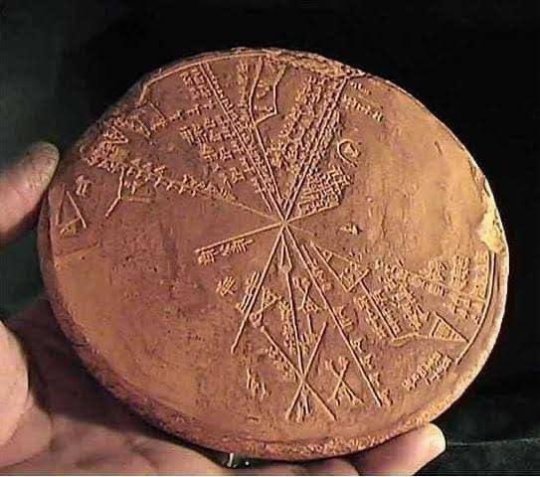
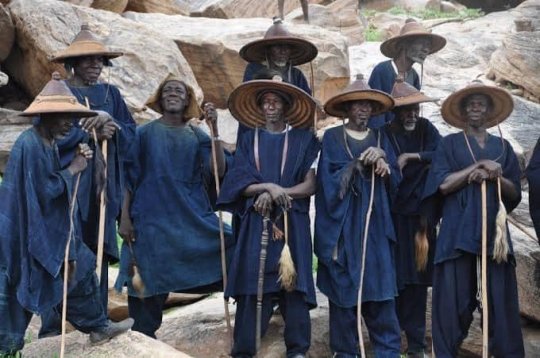
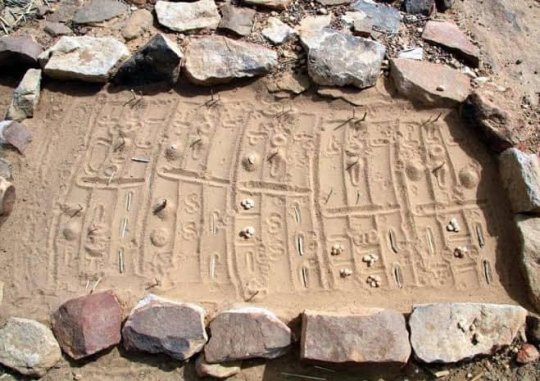
The story of the Dogon people is a testament to the power of cultural preservation and the importance of honouring and respecting the knowledge and traditions of indigenous peoples. Their astronomical knowledge and unique architecture serve as a reminder of the richness and diversity of African cultures, and their story inspires us to learn more about the history and traditions of Africa and its peoples. #Africa
Joe_Bassey. - twitter
·
10 notes
·
View notes
Text
50+ African goddess names and meanings - Tuko.co.ke
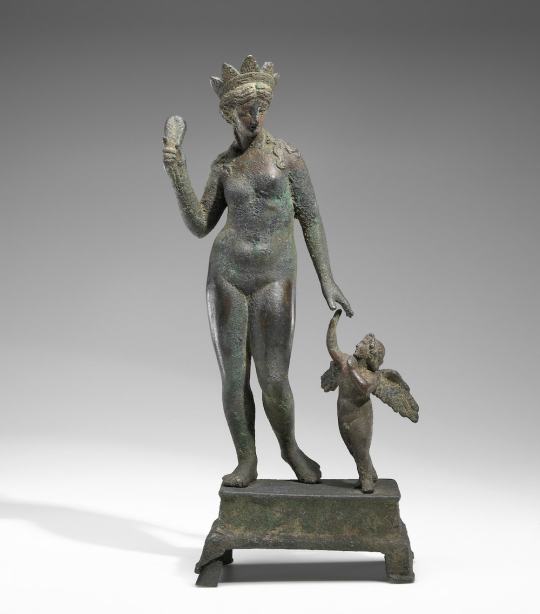
Most communities from around the world believed in various goddesses as their keeper and fate determiners. Most of the goddesses from the early years continue to inspire generations for their irreplaceable roles. Notably, there were deities in charge of every sect of life, contrary to the current monotheism system of belief.
Who are the African goddesses? Ancient African thrived under a robust faith system before westernization, among the most deity-centred parts of life, including love, beauty, fire, rain, and harvest. Goddesses were incredibly respectable, with each bearing a specific name depending on the primary roles. Here are the African mythology goddesses, their names, and meanings.
African goddess of love and beauty
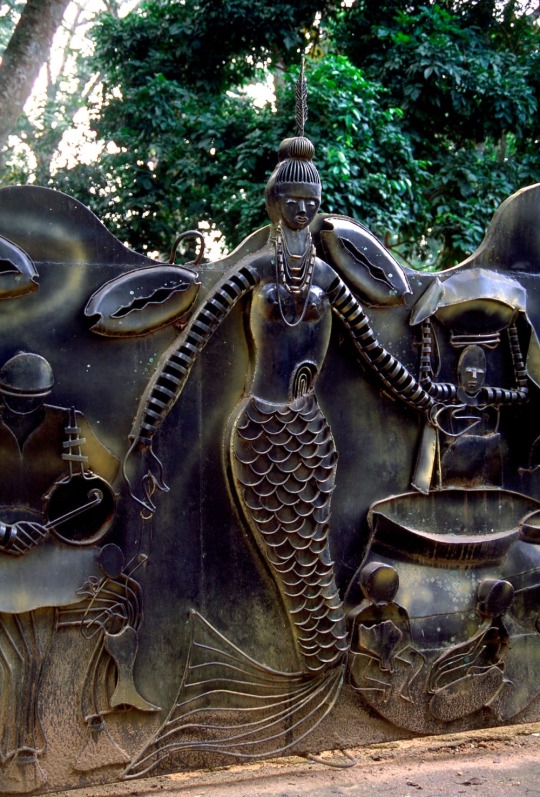
Who is the African goddess of love? Oshun is the African goddess of love and sweet waters. She is a specific deity among the Yoruba people of Nigeria. Oshun is by far the most famous African goddess of beauty.
Creator, sun, moon, stars, or nature female deities
Gleti - She is the moon goddess revered by all in the Dahomey kingdom, particularly the Fon people, Benin. She is the mother of all-stars.
Nana Buluku - The goddess is a supreme creator and mother to the sun spirit Lisa, moon spirit Mawu, and the entire universe, in Dahomey mythology, West Africa. She is also called Nana Buku or Nana Buruku.
Aberewa - Goddess of earth among the Ashanti in Ghana
Aja - Goddess of the forest among the Yoruba
Mawu-Lisa - Creator goddess, Fon people of Benin
Amma - Creator goddess in Burkina Faso and Mali, Dogon people
Asaase - Afua the earth goddess in Ghana among the Ashanti
Faro - Creator goddess in Mali, Bambara people
Kitaka - Earth goddess in Uganda, Baganda people
Nkwa - Creator goddess in Gabon, Fang people
Woyengi - Creator goddess among the Ijo in Nigeria
African goddess of fire
Who is the African god of fire? Africans believed that different goddesses had authorities over the fire.
Oya- Wears a lot of red, is the Yoruba warrior-goddess of fire. She is also the goddess of the Niger river, magic, wind, fertility, and other chaotic, electrifying phenomena.
Morimi- Goddess of fire among the Yoruba
African goddess of fertility and harvest
Asase Ya - She is also famous as Asaase Afua, Asaase Yaa, or Asase Yaa among the Bono people of the Akan ethnic group in Ghana and Guinea Coast. She is the goddess of fertility on the earth, bearing other divine titles such as Aberewaa or Mother Earth. She is second to Nyame (the Creator) in power and reverence.
Mboya - Fertility and motherhood deity in Congo
Mbaba Mwana Waresa - Fertility goddess in South Africa among the Zulu
Ala (odinani) - The Igbo people esteem Ala being the goddess of morality, creativity, fertility, and the earth as a whole. She is the most important deity in the Igbo mythology.
Ahia Njoku - She is a famous goddess among the Igbo people of southeastern Nigeria. The community believes she is responsible for yam, a special treat among the locals.
Abuk - deity of women and gardens in Sudan
Mwambwa - Goddess of desire and lust in Namibia
Inkosazana - Goddess of agriculture in South Africa, Zulu people
African rain, river, sea, and water goddesses
Mami Wata - The goddess is a well-known water spirit displaying male characters at times. Residents of West, Central Africa, and Southern Africa uphold her goddess powers as supreme.
Oba - Obba was the first wife of Shango, the third king of the Oyo Empire and the Yoruba Undergod of thunder and lightning. This African name refers to the river goddess in African mythology. She is the breath of divinity when it comes to the gods of rivers.
Bunzi - Kongo mythology believes in Bunzi as the goddess of the rain. She is the daughter of her great mother, Mboze. She is a coloured serpent well pleased with those who bring their plentiful harvest in her worship
Abena - River goddess associated with wealth symbols of brass and gold
Mamlambo - Goddess of rivers among the Zulu of South Africa
Obba - Goddess of Obba River in Nigeria
Yemaja - Goddess of Ogun River, Nigeria
Olokun - The African goddess of the sea in Nigeria
Yemaya - Goddess of the living ocean
Modjaji - Goddess of rain among the Balodedu people of South Africa
Majaji - Goddess of rain in South Africa, Lovedu people
Mbaba Mwana Waresa - Goddess of the rainbow, South Africa, Zulu people
Egyptian goddess names
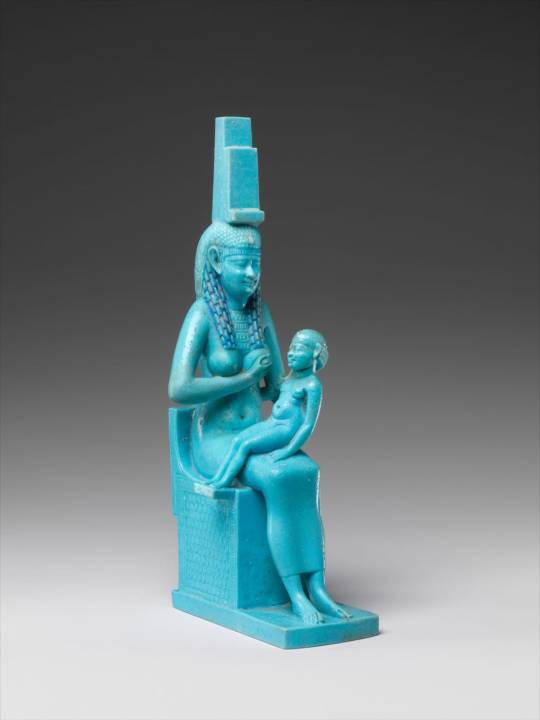
Isis - She is the commonest of all Egyptian goddess names, a respectable deity of the Egyptian pantheon. Isis is the African goddess of wisdom known for her cleverness that exceeds that of a million gods. The image of the goddess Isis suckling her son Horus was a powerful symbol of rebirth that was carried into the Ptolemaic period and later transferred to Rome.
Sekhmet- Fire-breather goddess among the Egyptians
Amunet – goddess of healing and wisdom
Ma'at – goddess who personified truth, justice, and order
Anat - goddess of fertility, war, love, and sexuality
Tefnut – goddess of moisture
Anta -mother goddess
Anqet - goddess of fertility and the Nile River cataract
Anuke – earliest goddess of war
Arensnuphis – sacred companion goddess to Isis
Pakhet - A hunting goddess taking the form of a lioness
Nebethetepet- Her name means "Lady of the Offerings" or "Satisfied Lady"
Tawaret- She is a hippopotamus with the breasts and belly of a pregnant woman, the paws of a lion, and a crocodile tail hanging behind her head. Often she holds a protection sign beneath her paws, but in this case it is absent.
Hathor- associated with afterlife, music and dance, and sexuality and motherhood
Nepit - Goddess of grain
Ethiopian goddess names
Most names of contemporary Ethiopian deities come from the Quran and the Bible. However, ancient inhabitants worshipped:
Aso: goddess of justice - She is coincidentally queen of the Ethiopian people.
Atete: goddess of fertility - Christian cult of the Virgin Mary among the Oromo People
More African goddess names and their meanings
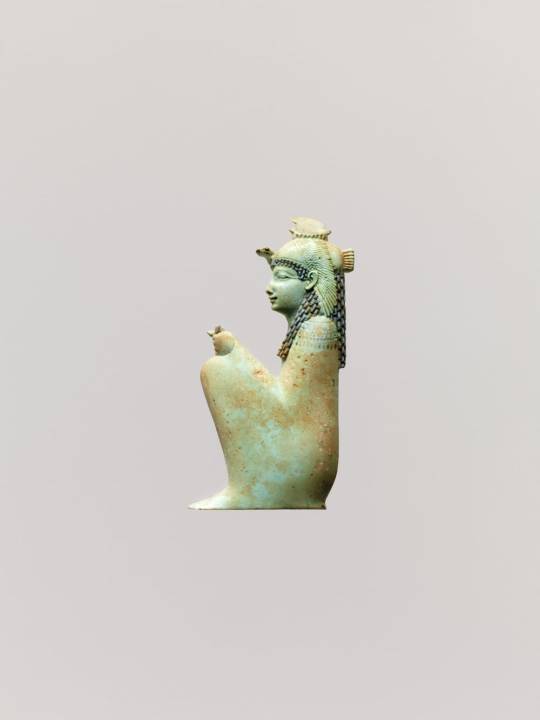
Gbadu -Goddess of fate in Benin, Fon people
Age-Fon - Goddess of hunters, Benin, Dahomey Empire
Achimi - Buffalo goddess, Algeria
Ancient deities share unique names based on their supernatural powers and influence in subject communities. Learning about African goddess names and meanings is useful for child naming. Furthermore, knowing these names helps in explaining ancient
6 notes
·
View notes
Text
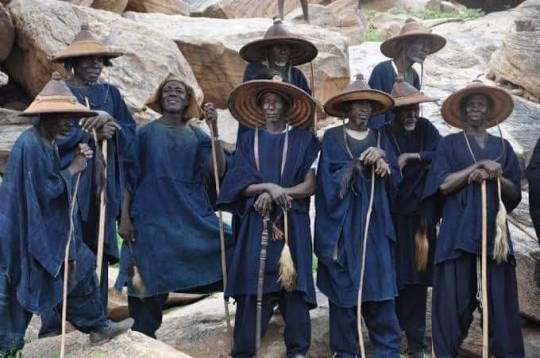
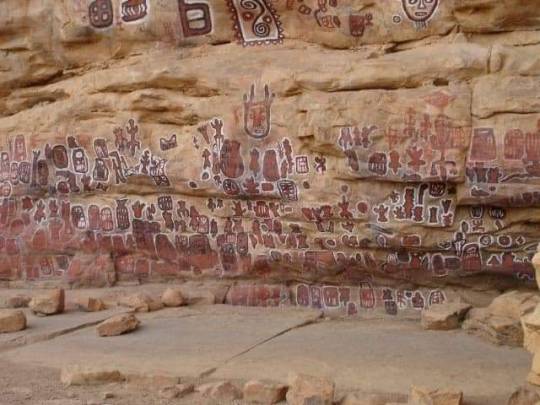

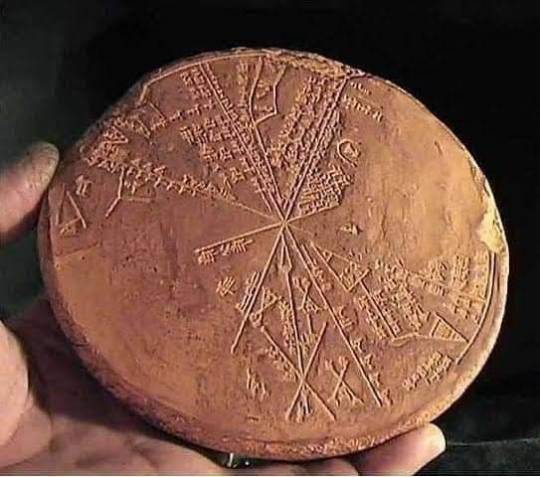

The Dogon People who are Naturally Specialize in Astronomy
___
The Dogon people is a community of people living in present-day Mali. Their original point of migration to their present locale is not known, however, some scholars have traced their ancestry to the ancient Egyptian empire. They are about 300,000 in population occupying about 700 villages with an average of about 500 inhabitants per village.
The Dogon people possesses a rich oral history and knowledge of astronomy, and this dates as far back as 3200 BC. According to the oral literature of the Dogon tribe, the star named; ‘Sirius A’ (the brightest star in the night sky with a bluish tinge) has an invisible companion star scientists have named ‘Sirius B’. This companion star is not only invisible to the naked eye but also completes a trip around ‘Sirius A’ every 50 years.
The story of the Dogon people of Mali is a remarkable tale of cultural preservation and astronomical knowledge. The Dogon people are an ethnic group that live in the Bandiagara Escarpment in Mali, West Africa. They are known for their unique and complex cosmology, which includes detailed knowledge of the stars and the universe.
According to Dogon mythology, their ancestors were visited by a race of beings from the Sirius star system, known as the Nommo. The Nommo were described as amphibious creatures who brought knowledge and culture to the Dogon people. They taught the Dogon about the movements of the stars, the nature of the universe, and the importance of harmony and balance.
The Dogon have a detailed knowledge of astronomy, including the location and movements of the stars, the moon, and the planets. They have been able to accurately predict astronomical events, such as eclipses and the cycles of the moon, for centuries. Their astronomical knowledge has been passed down through oral tradition and is considered to be among the most sophisticated in the world.
The Dogon are also known for their unique architecture, which includes houses built into the cliffs of the Bandiagara Escarpment. These houses are made of mud and stone and feature intricate carvings and designs.
Despite the challenges of modernization and globalization, the Dogon have managed to preserve their cultural traditions and way of life. They continue to practice their cosmology and hold onto their ancient knowledge, even as the world around them changes.
The story of the Dogon people is a testament to the power of cultural preservation and the importance of honoring and respecting the knowledge and traditions of indigenous peoples. Their astronomical knowledge and unique architecture serve as a reminder of the richness and diversity of African cultures, and their story inspires us to learn more about the history and traditions of Africa and its peoples.
#Africa #blackhistory #africa #BlackHistoryMonth #blackhistoryfacts
32 notes
·
View notes
Text
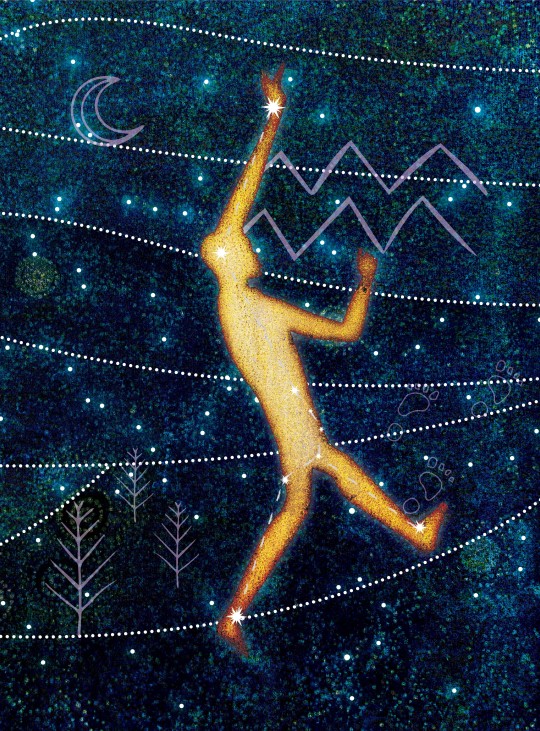
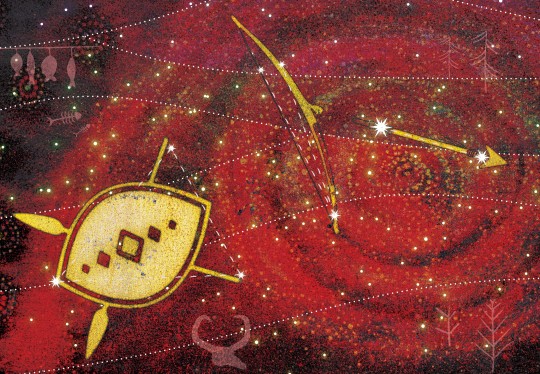
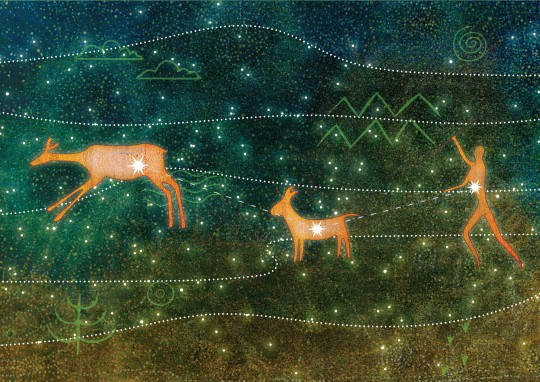
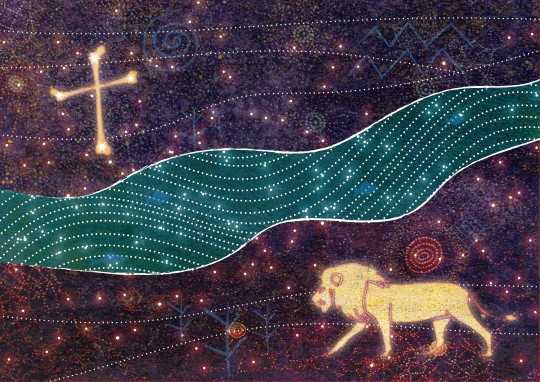
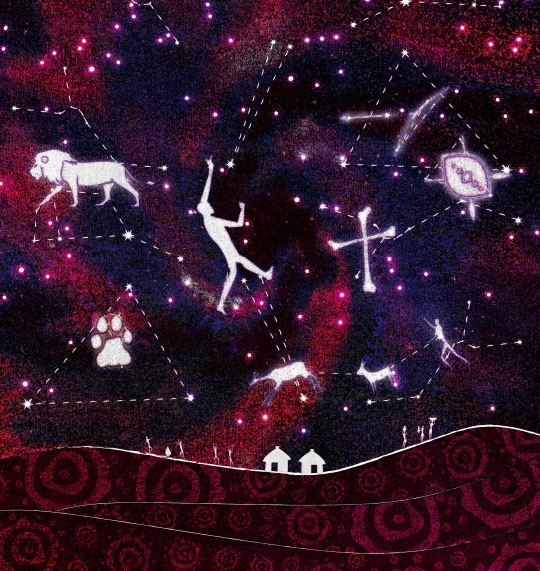
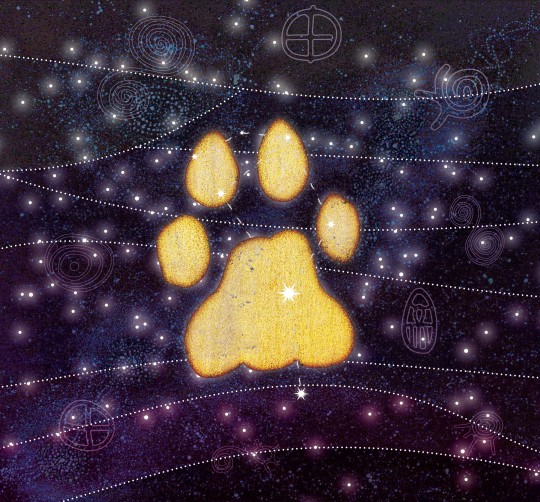
Stars are not just distant specks of light in the African night sky but the guiding lights of mythology, culture, and spirituality.
Indigenous astronomical knowledge is recorded among many African tribes like the Dogon people of Mali, who have rich astronomical knowledge and are said to have made ancient observations of the planetary orbits of Saturn, Mars, Venus and Jupiter with her four major moons.
The traditional astronomical knowledge of the San and Nguni people of Southern Africa is recorded to have guided their agriculture irrigation systems and inspired their religious practices.
In many African societies, navigating life with the guidance of stars has birthed a rich reservoir of practical knowledge useful for timekeeping, agriculture, geography, record keeping and history.
As we explore culture and astronomy from the Chokwe perspective, we must state that we see the skies as we are. Our place on the planet determines our seasons, which affects what heavenly bodies we can observe. Perceptions of star patterns are influenced by the latitude of the observer, and from around 10 degrees south, the Chokwe had the geographical placement to observe and intertwine their star knowledge with their practices and identity.
For the Chokwe, stars tell the story of their people, weaving an intricate tale that forms the fabric of their identity. To the Chokwe, the life of a star is like the story of man, starting with birth, coloured by obstacles and triumph, before ending with the honour of death. The night sky has served as a source of wisdom, a symbol of royalty, and a connection to their revered ancestors.
To learn Chokwe astronomy, we must begin with Tangwa, the sun; Ngonde, the moon's phases; Litota, the stars; and Ntongonoshi, the universe in relation to the stars.
Royalty is a central part of Chokwe culture and is reflected in the sky where we see Ndumba, the lion that walks among the Tulamba - the ancestors, who guide his invisible stride in the Milky Way, leaving paw prints of litota in his path. The Chokwe people refer to the Milky Way as the Mulawiji or the Resting River, and it is used primarily as a star calendar and a compass. This shows an intimate knowledge of the skies as the orientation of the Milky Way changes considerably over the course of the year. Chokwe diviners call the Milky Way the Mulalankungu, which means the King's Road. Nkungu is the name of the great, ancient Chokwe king, and the term refers to him. The Milky Way is a significant part of divination stories, and the diviner's basket, or Ngombo, has objects that represent the stars that the diviner uses as symbols for interpretation.
We are also introduced to Tutumwe Twa Mwanangana, which means 'Child of Wisdom' or 'Sending a Message to the Lord of the Land'. This constellation is depicted as four stars displaying a running, sweating messenger sent to announce the arrival of Mwenga, the new wife represented by the morning star, Venus. We see him spanning across four stars encapsulated in the three constellations of Bootes, Coronae Borealis and Herculis. The four stars, Alphecca, his head; Coronae Borealis accentuating the curve of his powerful hips as he runs; Herculis is his leg extended behind him and in his outstretched hand, Arcturus, the bright message of wisdom.
The beauty of Chokwe cosmology is endless, with serendipitous parallels to Western astronomy. For example, the hunter seen in Orion's Belt is also seen as a hunter by the Chokwe, and they call it Tujita Jita, symbolically interpreted as 'go to fight and always win'. Interestingly, for the Chokwe, the hunter is much closer to his dog in the constellation than in Greek and Egyptian mythology, where the dogs are in separate Canis Minor and Major constellations. Tujilika spans across three modern constellations of Triangulum Australe, Circinus and Centaurus. The symbolic meaning of Tujikila to the Chokwe people is 'the children are protecting you.'
The Nkungu – The Southern Cross represents the ancestors' bones shown by the four brightest stars connected in a cross, and this constellation guides the Mukanda, a circumcision initiation ceremony practised by the Chokwe.
The Seven Sisters, or The Pleiades, are Van Ava Nkungulwila, a lion's claws. Nkungulwila refers to the Nkungu clan and its people, and just as they are together on earth, they are together in the heavens, forming a relationship between heaven, earth, life, and death. The Chokwe see the heavens as their ancestors' home; in their cosmology, when people die, they are reborn in the lion's claws – The Seven Sisters. Considering this belief, it is fascinating to note that astronomers have recognised that this constellation is a star factory where new stars are created as the interstellar gas cloud contracts under the force of gravity. There are reddish stars within the constellation that astronomers recognise as dying stars in a supernova, which the Chokwe recognise as the Nalindele; a star whose season is over and is waning; this story is told in relation to an old wife.
Ancient Chokwe star lore, steeped in symbolism and cultural significance, aligns intriguingly with Western scientific discoveries. It's a reminder that despite diverse perspectives, our shared celestial heritage connects us all.
Modern Zambian society is embracing its traditional star knowledge in exciting ways. Young Zambians blend age-old wisdom with contemporary science and technology, forging a path towards the stars. A brief look can be taken at the enduring legacy of the Zambia Space Program of Edward Nkoloso, who coined the term Afronauts, which has come to embody a time when Zambians were bold and brave about exploring the wondrous mysteries of the universe.
The stars have a unique way of uniting us all, transcending borders, cultures, and time. Our fascination with the night sky is universal, but it's crucial to stay curious and remember that the cosmos is vast and diverse, just like the cultures it inspires. Whether you're gazing at the stars from the Chokwe heartlands of Northwestern Zambia or the bustling streets of Lusaka, we're all part of a timeless story that stretches beyond the horizon of our understanding. The stars above are the same stars that have guided us since time immemorial, reminding us of our shared journey through the great expanse of the universe.
6 notes
·
View notes
Text
Brian Jackson - Mami Wata - Joaquin Joe Claussell Sacred Rhythm and Cosmic Arts Remixes - SIX remixes of this song from his 2022 album This Is Brian Jackson
"Mami Wata" - A Captivating Journey through West African Rhythms. Experience the mesmerizing fusion of traditional African sounds and modern Latin house in Brian Jackson's latest single package, "Mami Wata." Drawing inspiration from the depths of West African mythology, this track takes you on a captivating sonic adventure that spans vast regions of the continent. Brian Jackson's rendition of a traditional African song resonates with the richness and abundance symbolized by the mythical figure of Mami Wata. From the sacred lands of the Dogon in Mali to the vibrant rhythms of Ghana, and even reaching into the heart of Central and Southern Africa, this composition pays homage to the diverse tapestry of African cultures. To further elevate this masterpiece, Brian has collaborated with the masterful Joe Claussell, who lends his expert touch to craft a remix that intertwines a modern Latin house thread with the African fabric of the original composition. The result is the Sacred Arts Mix, a true testament to the power of music as it effortlessly merges genres and weaves an enchanting spell over the dancefloor. This single package boasts not just one, but six distinct versions of "Mami Wata," each carefully crafted with its own unique tempo and subtle seasoning. Whether you prefer the rhythmic intensity of the Sacred Rhythm version, the deep dub vibes of the Deep Dub edition, or the extended album version that allows you to fully immerse yourself in the magic of the composition, this release offers a diverse range of musical experiences. The remix package brings to life Brian’s immersive vocals, flute, kalimba, and organ playing. And for those seeking a slower, introspective groove, the Cosmic Arts Future Instrumental Slow version provides a celestial atmosphere that will make you feel as though you're floating among the stars.
11 notes
·
View notes
Text
Why do people keep using “African mythology” as an actual term? I mean beyond the clickbait appeal.
I mean... There is a lot of ways that people keep demeaning Africa as a continent by precisely considering it as just one big country instead of, you know, A FRIGGIN HUGE CONTINENT WITH TONS OF CULTURES, RELIGIONS AND COUNTRIES IN IT. And one of these cases is in videos on Youtube or posts on Tumblr or whatever you think about that talks about... “African mythology”.
If these same accounts also did videos or posts about “European mythology” or “Asian mythology” I’d be fine because, while it stays stupid appelations, at least it sticks to a same fundamental logic, the one to treat every continent’s myriad of cultures as one big mythology. But NO! These accounts take great care to split the various European mythologies into “Greek, Norse, Celtic”, etc etc... And then dump you a big old “Africa mythology”.
No Zulu mythology, no Akan mythology, no Egyptian mythology, no Berber mythology, no Dogon mythology, no Bantu mythology...
Just, you know. Good ol’ African mythology.
18 notes
·
View notes
Text

#BlackHistoryMonth
Syzygy (2015) by British-Liberian visual artist, Lina Iris Viktor, (born in 1987) who is based in New York.
Pure 24k gold, acrylic paint and print on matte canvas
102 x 132 cm, 40 x 52 in approx
Syzygy is the astronomical term for the exact alignment of the sun, moon, and the earth in a straight line.
Lina Iris Viktor's works have been described as 'queenly self-portraits with a futuristic edge'. She works with a restricted colour palette and the age-old technique of gilding with 24-karat gold.
Using painting, sculpture, performance, installations and photography, she draws on artistic traditions and visual influences from African symbolism and cosmology spanning from the present-day Dogon people of Mali to ancient Egypt, classical mythology and astronomy, and European portraiture. Viktor says: ‘My interest is to work with patterns, because I believe that the universe is governed by pattern systems, those that are so present in African textiles, which are communicated through inferred knowledge, rather than literal knowledge.’ For Viktor, gold is both substance and symbol, a conduit to spiritual transcendence. The opulent ultramarine blue emulates the ‘blue room’ in the artist's former studio.
3 notes
·
View notes
Note
Imagine Kiyo infodumping to Kokichi about the history and cultural significance of piercings cause he noticed Kokichi's piercing holes.
"Ah I see that you have your lips pierced, I honestly didn't expect that from you. You always gave off the feeling of someone who didn't want to betray your.... youthful appearance. Anyways did you know-"
Korekiyo: The lip piercing history dated back to some cultures both in Africa and the Americas. It is a common practice among the people of Papua New Guinea, the Dongon people of Mali, the Nuba of Sudan and Ethiopia. Also found among the people of the Amazon basin in South America. In the Pre-Columbian era, the people of South America, and some tribes in Malawi had a practice whereby lips are stretched by piercing and insertion of plates or plugs. This type of plate (lip disc) is called “pelele” in Malawi.
The Dogon people of Mali pierce their lips to symbolize the world’s creation by their ancestor spirit. The myth surrounding this was that Noomi (a goddess) wove a thread through her teeth, and transformed into speech when it came out. In other cultures, it’s a ritual practice to pierce lips. The Makololo women (people of Southern Africa) beautify themselves by wearing plates (pelele) in their upper lips. This plate is usually inserted by the potential husband about six months before marriage. This is a betrothal rite and the bigger the plate, the more the dowry.
The ancient Aztecs (in central Mexico) and Mayans (in southern Mexico) practiced a series of body modifications as a ritual or ceremonial practice. Lip piercing is one of such modifications. Males who were intended to join the military got their lips pierced at a tender age. An ornament is then placed and stretched as they brought more war prisoners. They reserved labret piercing for the males of the higher castes. These people wore beautiful, serpent-shaped gold labrets with stones inset. Immediately after the piercing, no ornament is placed to allow for more bloodletting aimed at appeasing the deities.
Lip piercing is an ancient practice that has spiritual and mythological histories surrounding it. It is however still being practiced in the modern society of today mainly for aesthetic purposes.
(source)
Kokichi: Staring at him like he grew a second head
4 notes
·
View notes
Text
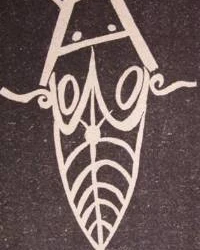
The religious beliefs of the Dogon are enormously complex and knowledge of them varies greatly within Dogon society. Dogon religion is defined primarily through the worship of the ancestors and the spirits whom they encountered as they slowly migrated from their obscure ancestral homelands to the Bandiagara cliffs. They were called the Nommo.
The Nommo are ancestral spirits (sometimes referred to as deities) worshipped by the Dogon people of Mali. The word Nommos is derived from a Dogon word meaning "to make one drink." The Nommos are usually described as amphibious, hermaphroditic, fish-like creatures. Folk art depictions of the Nommos show creatures with humanoid upper torsos, legs/feet, and a fish-like lower torso and tail. The Nommos are also referred to as "Masters of the Water", "the Monitors", and "the Teachers". Nommo can be a proper name of an individual, or can refer to the group of spirits as a whole.

Dogon mythology states that Nommo was the first living creature created by the sky god Amma. Shortly after his creation, Nommo underwent a transformation and multiplied into four pairs of twins. One of the twins rebelled against the universal order created by Amma. To restore order to his creation, Amma sacrificed another of the Nommo progeny, whose body was dismembered and scattered throughout the world. This dispersal of body parts is seen by the Dogon as the source for the proliferation of Binu shrines throughout the Dogons' traditional territory; wherever a body part fell, a shrine was erected.
The Nommo allegedly descended from the sky in a vessel accompanied by fire and thunder. After arriving, the Nommos created a reservoir of water and subsequently dove into the water. The Dogon legends state that the Nommos required a watery environment in which to live. According to the myth related to Griaule and Dieterlen: "The Nommo divided his body among men to feed them; that is why it is also said that as the universe "had drunk of his body," the Nommo also made men drink. He gave all his life principles to human beings." The Nommo was crucified on a tree, but was resurrected and returned to his home world. Dogon legend has it that he will return in the future to revisit the Earth in a human form.
The Dogon are famous for their astronomical knowledge taught through oral tradition, dating back thousands of years, referencing the binary star Sirius. In the latter part of the 1940s, French anthropologists Marcel Griaule and Germaine Dieterlen - who had been working with the Dogon since 1931 - confirming this theory. Their astronomical information begs the question - How did the Dogon come by this knowledge? Their oral traditions say it was given to them by the Nommo.
As the story goes ... in the late 1930s, four Dogon priests shared their most important secret tradition with two French anthropologists, Marcel Griaule and Germain Dieterlen after they had spent an apprenticeship of fifteen years living with the tribe. These were secret myths about the star Sirius, which is 8.6 light years from the Earth.
The Dogon priests said that Sirius had a companion star that was invisible to the human eye. They also stated that the star moved in a 50-year elliptical orbit around Sirius, that it was small and incredibly heavy, and that it rotated on its axis.
Initially the anthropologists wrote it off publishing the information in an obscure anthropological journal, because they didn't appreciate the astronomical importance of the information.
What they didn't know was that since 1844, astronomers had suspected that Sirius A had a companion star. This was in part determined when it was observed that the path of the star wobbled.
In 1862 Alvan Clark discovered the second star making Sirius a binary star system (two stars).
In the 1920's it was determined that Sirius B, the companion of Sirius, was a white dwarf star. White dwarfs are small, dense stars that burn dimly. The pull of its gravity causes Sirius' wavy movement. Sirius B is smaller than planet Earth.
The Dogon name for Sirius B is Po Tolo. It means star - tolo and smallest seed - po. Seed refers to creation. In this case, perhaps human creation. By this name they describe the star's smallness. It is, they say, the smallest thing there is. They also claim that it is 'the heaviest star' and is white in color. The Dogon thus attribute to Sirius B its three principal properties as a white dwarf: small, heavy, white.
Source: https://www.crystalinks.com/dogon.html
2 notes
·
View notes
Text
Biging Kizazi Moto: Generation Fire; Hatima is my fave due to its 2D animation + allusions to Dogon mythology. Its a shame this amazing afrofuturist anthology has Disney attached to it.
6 notes
·
View notes